Papers by Martiya Sadeghi
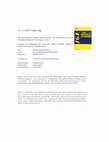
Journal of Geochemical Exploration, Oct 1, 2016
Traditionally, a geochemical exploration index is based mainly on elemental concentration, and fo... more Traditionally, a geochemical exploration index is based mainly on elemental concentration, and focusses on positive anomalies. This results in two problems: firstly, it ignores depleted elements, negative anomalies, and immobile elements, and secondly, elemental concentration does not directly reveal the degree of elemental mobility. To discover information on element mobility and utilize negative anomalies, the Isocon method was employed to calculate mass-transfer, and study anomalous elemental characteristics in the Zhaojikou epithermal Pb-Zn deposit, SE China. Subsequently, the concept of a multi-attribute anomaly structure is proposed, which refers to enrichment and depletion zones of multiple elements co-existing in an ore deposit. This includes major elements, mineralizing agents, and ore-forming and associated elements. Results show that there are system mass-transfer (μ), Na 2 O, and S anomalies, correlations between S-FeO-Pb+Zn, and Pb, Zn, Cu, Ag, As, and Sb anomalies in the multi-attribute anomaly structure model of the Zhaojikou Pb-Zn ore deposit. The presence of the μ anomaly indicates there was at least one mass-exchange geological event, with the extent of the anomaly representing the impact area of the event(s). The extent of the negative Na 2 O anomaly represents the fluid-rock interaction zones. The positive S anomaly suggests the presence of sulphides. The correlations between S-FeO-Pb+Zn reveal there are numerous other economic metal sulphides (i.e., excluding noneconomic Fe-rich sulphides like pyrite). Ore-forming and associated elemental anomalies indicate the potential presence of polymetallic sulphides. μ > 0.3, ΔC Na2O O-A <-7 kg, and μ Na2O <-50% can act as evaluation indices for ore prospecting. There are two anomalous centres in the Zhaojikou Pb-Zn ore deposit. The shallower and larger one corresponds solely to the presence of the known orebodies. However, the deeper and smaller one is not currently known, and suggests ores may be present at depth. In summary, the Zhaojikou district has great potential for additional ore deposits at depth. We suggest directing further work deeper, mainly along NE-SW Dongzhi Fault.
Zenodo (CERN European Organization for Nuclear Research), Nov 30, 2021
Collection of agricultural soil samples in Europe (0–20 cm, 33 countries, 5.6 million km 2 ) duri... more Collection of agricultural soil samples in Europe (0–20 cm, 33 countries, 5.6 million km 2 ) during the GEMAS (GEochemical Mapping of Agricultural and grazing land Soil) continental-scale project allowed the study of geochemical behaviour of major elements during weathering (SiO 2 , TiO 2 , Al 2 O 3 , Fe 2 O 3 , MgO, CaO, Na 2 O, K 2 O, P 2 O 5 ) using their total concentrations (XRF data). The chemical composition of soil represents to a large extent the primary mineralogy of the source bedrock, the effects of preand post-depositional weathering and element mobility, either by leaching or mineral sorting with the addition of formation of secondary products such as clays.
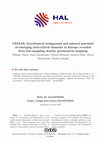
Applied Geochemistry, 2019
The demand for 'high-tech' element resources (e.g., rare earth elements, lithium, platinum group ... more The demand for 'high-tech' element resources (e.g., rare earth elements, lithium, platinum group elements) has increased with their continued consumption in developed countries and the emergence of developing economies. To provide a sound knowledge base for future generations, it is necessary to identify the spatial distribution of critical elements at a broadscale, and to delineate areas for follow-up surveys. Subsequently, this knowledge can be used to study possible environmental consequences of the increased use of these resources. In this paper, three critical industrial elements (Sb, W, Li) from low-sampling density geochemical mapping at the continental-scale are presented. The geochemical distribution and spatial patterns have been obtained from agricultural soil samples (Ap-horizon, 0-20 cm; N=2108 samples) collected at a density of 1 site per 2500 km 2 and analysed by ICP-MS after a hot aqua regia digestion as part of the GEMAS (GEochemical Mapping of Agricultural and grazing land Soil) soil-mapping project in 33 European countries. Most of the geochemical maps show exclusively natural background element concentrations with minor, or without, anthropogenic influence. The maximum extent of the last glaciation is marked as a discrete element concentration break, and a distinct difference occurs in element concentration levels between the soil of northern and southern Europe, most likely an effect of soil genesis, age and weathering. The Sb, W and Li concentrations in soil provide a general overview of element spatial distribution in relation to complexity of the underlying bedrock and element mobility in the surface environment at the continental-scale. The chemical composition of agricultural soil represents largely the primary mineralogy of the source bedrock, the effects of pre-and postdepositional chemical weathering, formation of secondary products, such as clays, and element mobility, either by leaching or mineral sorting. Observed geochemical patterns of Li, W and Sb can be often linked with known mineralisation as recorded in the ProMine Mineral Database, where elements in question occur either as main or secondary resources. Anthropogenic impact has only been identified locally, predominantly in the vicinity of large urban agglomerations. Unexplained high element concentrations may potentially indicate new sources for high-tech elements and should be investigated at a more detailed scale.
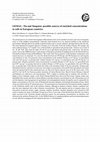
Tin and tungsten occur related with magmatic differentiation and can be installed in fissures and... more Tin and tungsten occur related with magmatic differentiation and can be installed in fissures and veins of magmatic rocks or in the neighbor metasediments. Generally, both elements have low chemical mobility in the superficial environment although effectively mobile in detrital media such as stream sediments and deposited in alluvial soils. The most important tin-tungsten deposits in Europe are in Variscides. From the northern Europe, 985 samples and from southern Europe 1123 samples were collected both in agricultural and grazing lands. Analysis were made of Sn , W, pH, TOC, SiO 2 from the upper 20 and 10 cm of agricultural and grazing soils, respectively. The present study is part of the GEMAS project a joint project of European geochemical mapping between the EuroGeoSurvey Geochemical Expert Group and EuroMetaux. The results show that in general, at the European (continental) scale natural processes are dominant. It is clear the distinction between NE Europe and SW European tin and tungsten concentrations in soils. Tin geometric mean concentrations in the northern Europe is 0.57 mg kg-1 in agricultural soils and 0.62 mg kg-1 in grazing land; southern Europe 0.91 mg kg-1 in agricultural soils and 0.95 mg kg-1 in grazing land. Tungsten geometric mean concentrations in northern Europe is 0.067 mg kg-1 in agricultural soils and 0.073 mg kg-1 in grazing land and in southern Europe is 0.085 mg kg-1 in agricultural soils and 0.090 mg kg-1 in grazing land. Limit between north and south is the maximum extent of the last glaciation. Grazing land, undisturbed soils for a period of several years, have higher concentrations of Sn and W than agricultural soils which raises the question that if only natural processes are observed. Parent material seems to be the main source of Sn and W to soil. Sn-W rich Variscan granitic intrusions of Central Iberian Zone, Massif Central, Brittany, Cornwall and Bohemia are reflected in soil concentrations. TOC is higher in northern than in southern soils and SiO 2 is higher in loess sediments region, in the North German-Poland basin and in the Paris basin. Organic matter may immobilise these metals and silica content influences metallic elements concentrations in soils. Natural processes of soil development, land management of agricultural soils and population density all together may be responsible for higher concentrations of W in the soils of Netherlands Germany, Belgium, Switzerland and northeast France which seems not related with Sn-W mineral provinces. Tin and tungsten are enriched in the Precambrian shields compared to the Caledonian shields soils in the northern countries, although in northern countries climatic conditions may play the most important role in these elements concentrations. Tin and tungsten and tin or tungsten alone or in association of precious metals, copper, uranium, niobium, beryllium, titanium altogether were extracted in 650 small or median size mines in Portugal. Except tin in Neves Corvo mine of the Iberian Pyrite Belt the rest of these mines occurred in the Variscides granitic intrusions region. Tin and tungsten concentrations are therefore well reflected in the northern Portugal soils. At the GEMAS density of sampling pollution and local natural phenomena are not reflected in mapping but this important province is well delimited.
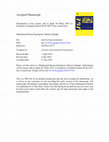
Journal of Geochemical Exploration, Nov 1, 2018
Irankuh-Emarat is an important district of Pb-Zn MVT-type deposits in Iran. The deposits are host... more Irankuh-Emarat is an important district of Pb-Zn MVT-type deposits in Iran. The deposits are hosted by Lower and Upper Cretaceous dolostone in which and several stages of mineralization were identified. The deposition of sulfide minerals occurred spatially within or close to dolostone and shalesiltstone units with replacement and open space filling textures. Field observations, mineralogical and petrographic studies show different degrees of alteration related to mineralization. Dolomite, particularly Fe-rich dolomite, ankerite, bitumen and silicified rocks are associated with the principal sulfide mineralization. Hydrothermal fluids at Irankuh had low sulfidation to form Fe-rich dolomite and ankerite within dolostone and pyrite in shale formations. Chemical analysis of representative samples within the belt show that in sphalerite, Fe content varies between 0.3-5.2%, Cd 150-2000 ppm. In galena, Ag varies between 150-1200 ppm and Sb 140-1200 ppm. Fluid inclusion study shows homogenization temperatures (Th) between 150-260˚C and fluid salinities 9-21% (NaCl, wt % equiv). Field observations showed that high Pb-Zn ore was deposited as replacement within the dolostone member favorable for chemical reaction. In this paper, we present a conceptual model for the formation of MVT deposits in the Irankuh-Emarat district. We suggest that the hydrothermal fluid originated from the dehydration of an oceanic subduction slab, which liberated Pb, Zn, and other metals, and may have removed metals from rocks and organic material of the continental crust. The down dip thermal gradient of the oceanic slab was about 18 ˚C/Km (hot slab). More than 90% of all the water within the oceanic slab was released in the depth zone of the forearc region (depth of 30 to 50 Km). Pb isotopic compositions of Irankuh-Emarat Pb-Zn deposits are 206 Pb/ 204 Pb from 18.42 to 18.45; 208 Pb/ 204 Pb from 38.53 to 38.62 and 207 Pb/ 204 Pb from 15.63 to 15.65. Very low radiogenic Pbisotopes indicate that Pb-isotopes had an oceanic slab source and were slightly contaminated by the basement rocks. Deep-seated thrust faults formed during the early stages of subduction, (Late Cretaceous?) and played an important role in the upward migration of hydrothermal fluids from the basement to shallow depths.
Geology, Geophysics and Environment, 2012
Ore Geology Reviews, 2022
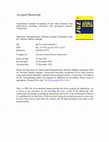
Journal of Geochemical Exploration, Oct 1, 2017
The aim of this paper is the geological studies and delineation of geochemical anomalies of lanth... more The aim of this paper is the geological studies and delineation of geochemical anomalies of lanthanum (La), cerium (Ce) and yttrium (Y) rare earth elements (REEs) in Saghand area, Central Iran. In order to recognize the mineralization zones considering their concentrations, the results of the sampled litho-geochemical data were processed by concentration-area (C-A) fractal model. The C-A log-log plots of the elements were generated and their thresholds were identified. Therefore, the high intensive geochemical anomalies of the studied elements were discriminated. A part of their high intensive geochemical anomalies are situated in the west of the study area occurred within the metasomatic, porphyry microdioritic and acidic volcanic rocks associated with epidotic alterations. The other high intensive geochemical anomalies of Ce and Y are located in the center of the study area. In addition, the moderate anomalies of La and Ce were located in the metasomatic units associated with epidote and chlorite alterations in the central part of the study area. The SE parts of the Ce moderate anomalies are probably related to basic dykes associating with epidotic alterations which are situated between metasomatic and microdioritic units. Based on the results obtained from multi-fractal modeling, the locations of the main anomalies of La, Ce and Y were recognized which all are in the western, central, southern, and SE parts of the study area. Several high and moderate concentration anomalies obtained from the C-A model were confirmed by ground surveying and compared with the achieved result from remote sensing investigation.
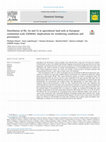
Chemical Geology, Feb 1, 2018
Agricultural soil (Ap-horizon, 0-20 cm) samples were collected from a large part of Europe (33 co... more Agricultural soil (Ap-horizon, 0-20 cm) samples were collected from a large part of Europe (33 countries, 5.6 million km 2) as part of the GEMAS (GEochemical Mapping of Agricultural and grazing land Soil) soil mapping project. The soil data have been used to provide a general view of element mobility and source rocks at the continental scale, either by reference to average crustal abundances or to normalised patterns of element mobility during weathering processes. The survey area includes a diverse group of soil parent materials with varying geological history, a wide range of climate zones, and landscapes. Total concentrations of Rb, Ga, and Cs in European soil were determined by XRF (X-ray fluorescence spectrometry). In addition, hot aqua regia available element concentrations were analysed by inductively coupled plasma-mass spectrometry ICP-MS. Their spatial distribution patterns are shown in geochemical maps. The spatial distribution of Rb, Ga and Cs in Ap soil is quite comparable for the aqua regia and XRF results. The Cs spatial pattern reflects best the large difference between trace element concentrations in northern Europe with predominantly low concentrations and southern Europe with approximately two times higher values. The maximum extent of the last glaciation is visible as a clear concentration break on the map. Lithology of the underlying bedrock is inferred as the major source of geochemical anomalies. In search for characterising the soil parent material and degree of weathering, the soil data were examined for Ga and Cs using two methods. First, the estimated degree of extractability DEi of an element in a sample was calculated by dividing aqua regia available concentrations by the total concentrations obtained by XRF analysis for Al, Na, Ca, K, Rb, Ga and Cs. The different DEi were investigated for 10 geological parent material subgroups (alkaline rocks, granite, calcareous rocks, basalt-mafic rocks, unclassified lithologies, Precambrian granitic gneiss bedrocks, loess, organic soils, schist and soil developed on coarse-grained sandy deposits). The role of clay as main carrier of Ga and Cs phases was inferred for soils developed on several types of bedrock such as granite, gneiss and alkaline rocks. Additionally, an affinity of Cs for loess and carbonate rocks has been observed.

Summary The prime focus of mineral prospectivity mapping (MPM) is the identification, delineation... more Summary The prime focus of mineral prospectivity mapping (MPM) is the identification, delineation and level of potential for an area to host feasible mineral resources. In general, GIS-based MPM can be either data driven or knowledge-driven. Methods of data-driven MPM, which involve quantitative analysis of spatial relationships among anomalies (i.e., indicators of mineralization) and existing occurrences of mineral deposits of the type sought, is suitable for “brownfields” or well-explored regions, wherein the objective is to define additional targets for exploration. One of the main objectives of WP3 in the FRAME project (www.frame.lneg.pt) is to produce a map of Strategic and Critical Raw Materials (SCRM) for Europe. Another objective is to produce predictive targeting based on GIS exploration tools at continental scale. in this presentation we will review the state of the art for the MPM and show example of the favourability maps using CBA method and hybride fuzzy weight of evidence produced in the FRAME project. This methodology represents different development stages, scales and progress of economic geology surveys which could be a tool to improve effectiveness and efficiency of future investments in exploration. Improved understanding and support for a balance management of competitive land-usage interests is an additional benefit.

Journal of Geochemical Exploration, Nov 1, 2016
Abstract The rock chemical composition may be affected by a wide variety of primary and secondary... more Abstract The rock chemical composition may be affected by a wide variety of primary and secondary geological processes. Analyzing geochemical datasets of highly altered rocks is usually faced with the challenges in detecting the relationships among objects. Using traditional clustering methods in such datasets with high-dimensional data and various types of attributes commonly leads to poor quality results. Hence, a graph-based geochemical approach was proposed in this study to solve this problem. In order to determine the relationship between objects, various similarity measures related to whole-rock composition, REE pattern, and the geographical location were employed in combination to weight the edges of a similarity graph. A spectral method was effectively used to identify clusters (communities) representing rock groups, geological units, or geochemical zones in the weighted similarity graph. It could also recognize the corresponding groups being compositionally and genetically similar to each other and distinguish sub-groups or anomalous samples in the dataset with regard to the different levels of clustering. Firstly, the performance and effectiveness of the proposed approach was evaluated by testing on a GEOROC 1 dataset based on some graph clustering quality functions. Then the approach was applied to the geochemical dataset of Choghart orebody comprising various altered rocks. The obtained clusters were visualized by a k-nearest neighbor classification technique to represent geochemical zones as a continuous map.
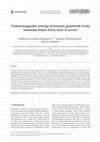
Geologos
The present paper discusses the geochemical affinities, origin and ages of Jurassic granitoids of... more The present paper discusses the geochemical affinities, origin and ages of Jurassic granitoids of the Sanandaj-Sirjan Zone (SaSZ) in the eastern part of the Zagros Thrust Zone. A multidisciplinary, integrated approach was carried out using existing granitoid geochemical data (major, trace, rare earth element and isotopes) and knowledge of the regional geology (geodynamic and metamorphic setting), coupled with geophysical data (magnetic susceptibility) from granitoids in the SaSZ. We re-interpret and re-classify the Jurassic granitoids of this zone into three main genetic groups: S-type, I-type and A-type subduction-related ones. In the central to southern part of the Sanandaj-Sirjan zone (between Hamadan and Sirjan), S-type magmatism appeared between 178 and 160 Ma during the Cimmerian orogeny, due to continental collision. To the north of the Sanandaj-Sirjan zone (between Sanandaj and Ghorveh), I-type and A-type magmatism occurred between 158 and 145 Ma. This heterogenic tectonomag...
15th SGA Biennial Meeting on Life with Ore Deposits on Earth, AUG 27-30, 2019, Univ Glasgow, Glasgow, SCOTLAND, 2019
Journal of Geochemical Exploration, 2022
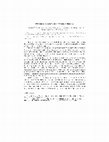
The increased global interest in rare earth element (REE) resources over the past few years has l... more The increased global interest in rare earth element (REE) resources over the past few years has led to new exploration activities and on-going re-evaluation of many previously known mineralisations. Through the discovery and subsequent publication by Finnish-Swedish chemist J. Gadolin in 1794, on the World ́s first known rare earth element (“yttria”, from Ytterby, north of Stockholm), the history of the REE was to be interconnected with Sweden. Indeed, during the end of the 18 and the better part of the 19 century, Sweden was at the centre of REE discoveries Over the intervening 222 years since Gadolin ́s publication, we have come to know a variety of genetically different types of REE mineralisations and occurrences that are relatively widely distributed over the Swedish part of the Fennoscandian shield and its cover units. In fact, the shield is one of the more promising areas in Europe for the exploration after hard-rock REE resources (cf. Goodenough et al . 2016). In this presen...
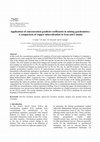
Journal of Mining and Environment, 2018
In this work, the concentration gradient (CG) analysis of local-scale exploration for Porphyry-Cu... more In this work, the concentration gradient (CG) analysis of local-scale exploration for Porphyry-Cu deposits is applied in two zones using the G(Vz) index (CG(Zn*Pb)/CG(Cu*Mo)). The first zone is covered by a 1:2000 map of the Sungun and Astamal areas in NW Iran and the second one in the Inza area in British Columbia, Canada. The rock samples are taken from Sungun and Astamal and the soil samples are taken from Inza. The Inza samples are analyzed for Cu, Pb, Zn, and Mo elements by the atomic absorption method, while the rock samples of Astamal and Sungun are analyzed for Cu, Pb, Zn, Mo, Ag, As, and Sb elements. The indices of gradient geochemical zonality (G(Vz)) of multi-elements around the mineral deposits and their spatial associations with particular geological, geochemical, and structural factors are the critical aspects that must be considered in mineral exploration. The values for the G(Vz) indices allow a distinction between the sub-ore and supra-ore anomalies, which are assoc...

Ore Geology Reviews, 2021
Abstract The Maherabad, Qaleh Zari, and Hired deposits in eastern Iran are porphyry (Cu-Au)-, Iro... more Abstract The Maherabad, Qaleh Zari, and Hired deposits in eastern Iran are porphyry (Cu-Au)-, Iron oxide copper–gold (IOCG)-, and reduced intrusion-related gold system (RIRGS)-type mineralization, respectively. They are located within the Lut block magmatic assemblage, which is the main metallogenic province in eastern Iran. The mineral assemblages and paragenesis of the deposits indicate that highest log fO2 and log fS2 contents belong to the Qaleh Zari deposit. In contrast, the lowest values of oxygen and sulphur fugacity are related to the RIRGS system in the Hired deposit. The Maherabad mineralization has moderate log fO2 and log fS2 contents relative to the Qaleh Zari and Hired deposits. Geochemically, these three deposits are related to different types of granitoids, which occurred within the short time interval from 37 to 41 Ma. The Maherabad and Qaleh Zari intrusions are related to oxidized magnetite-series granitoids, whereas the mineralization at Hired deposit is related to the reduced ilmenite-series granitoids. Magnetite-series intrusive rocks at Hired are barren. Intrusive bodies in the three studied sites are metaluminous, high-K calc-alkaline to shoshonitic, and formed in a volcanic arc setting. However, there are distinct differences in the radiogenic isotopic composition, content of some elements and elemental ratios reflecting the effect of different sources in the formation of intrusions. The reduced granite of the Hired deposit has the lowest Eu/Eu* of



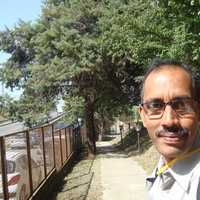





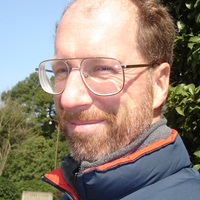
Uploads
Papers by Martiya Sadeghi